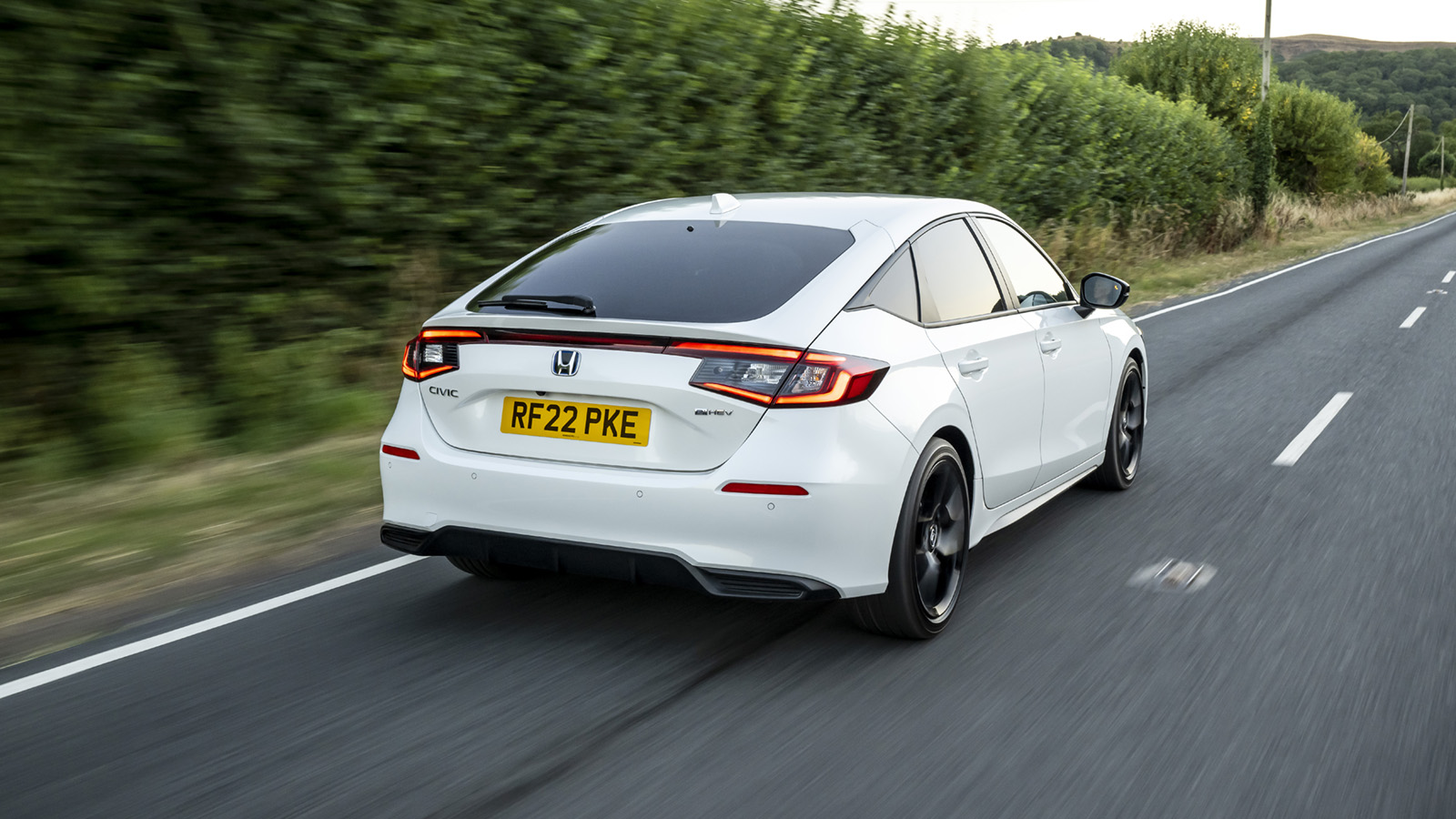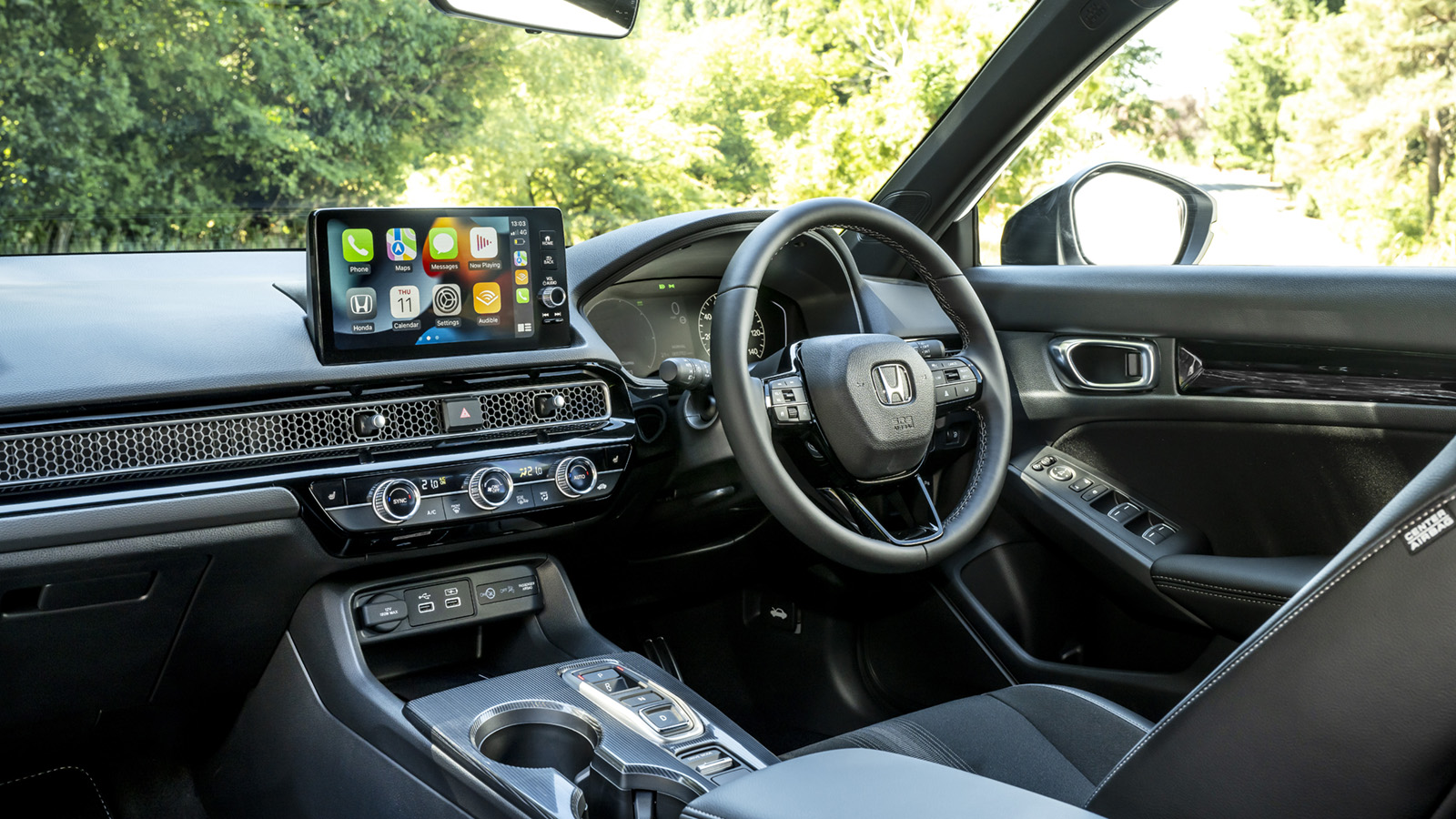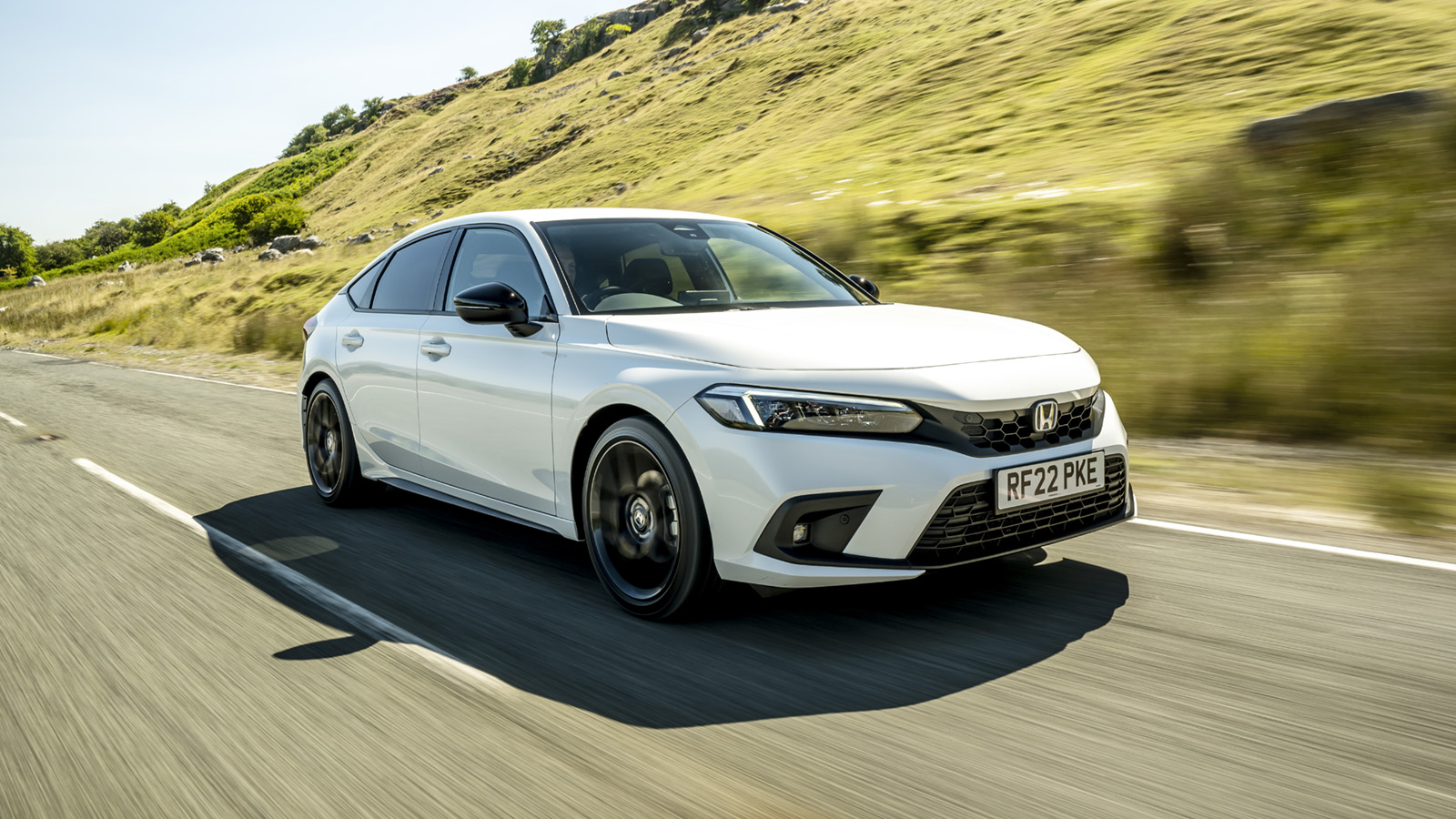
Interior
What is it like on the inside?
More good news in here too. It’s a more consistent cabin showing better material quality, ergonomic common sense and design touches than any Civic for a decade.
You can tell that Honda’s been sweating the small details. There’s a strip of honeycomb across the dash to add some flair, but Honda says the new vent design allows a wider distribution of air without having to adjust the vents. Sexy, huh?
Likewise, the new Body Stabilising Seats up front incorporate a resin mat structure to support your lower body. Says Honda – we’ve no idea what it means, but the seats are certainly comfortable and supportive. Your phone syncs easily, the climate controls are tactile. Buttons on the steering wheel are logical. Frankly, it’s all very German. As in, good old days German, not current, woeful touchscreen mayhem German, like the latest Golf.
In Sport trim, you get a semi-digital dashboard – in top-spec Advance the whole driver’s instrument section is a 10.2-inch screen with clear graphics. It’s not multi-configurable like a Peugeot’s screen, but you won’t miss it, and it’s much classier looking than the old Civic’s clocks.
How’s the infotainment?
The central touchscreen isn’t the finest: it’s related to the Honda e supermini’s interface and still lacks a snappy response when surfing the menus, even if Honda says the processor underneath is 50 per cent quicker. It also comes from the 'plonk it on top of the dash' school of design, but doesn't interview in your forward view.
Happily, the Apple and Android mirroring works quite well, so why bother with Honda’s interface when you can stick with the one you know from your beloved phone?
Is it practical?
There’s a decent range of driving position adjustment and visibility is fine – the A-pillars up front are nice and slim, and the rear view is better these days as there’s finally no spoiler bisecting the rear window, even if it remains steeply raked. Honda says that’s now possible because it’s gone for a plastic tailgate which is 20 per cent lighter but stronger than the old one. And that massive boot door is useful for access to the big 410-litre boot.
Underfloor stowage isn’t as deep as before but this is still a very commodious family hatchback cargo bay. The weird conveyor belt parcel shelf thingy remains, and we didn’t hear too much rattling out of it on typical dodgy UK roads. No triumphal return for the magic seats, either – the batteries sit under those rear pews – but folded down you get a flat space running through from back to front.
Speaking of the rear seats, space is indeed generous as you’d hope for such a large car. You feel the extra length of the car when sitting in the back, but the roofline doesn’t diminish headroom. In fact you can actually sit a six-foot passenger behind a six-foot driver in comfort, not apologising while rushing them to an airport.
Featured







